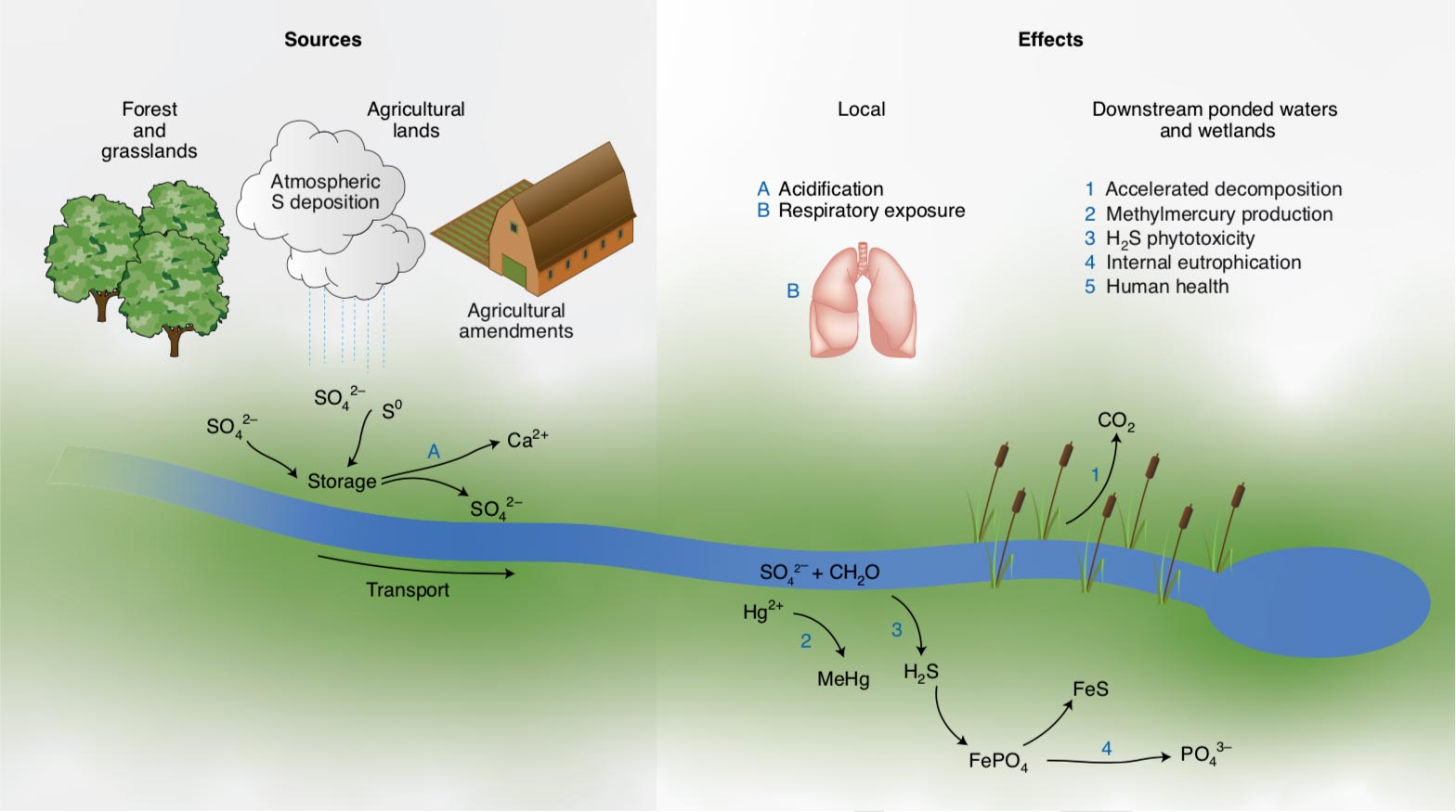Various forms of sulfur inputs are used in agricultural systems, including elemental sulfur and sulfate, among others. Image Credit: Illustration by KM Driscoll
In the past, coal-fired power plants were the largest source of reactive sulfur, a component of acid Rain in the biosphere. A new study recently published in the journal on Aug. 10 Natural geosciences shows that fertilizer and pesticide applications on farmland are the most important source of sulfur for the environment today.
Acid rain caught attention in the 1960s and 1970s when scientists linked the deterioration of forest and aquatic ecosystems in the northeastern United States and Europe to fossil fuel emissions from industrial centers, often hundreds of kilometers away. This research prompted the Clean Air Act and its amendments that regulated air pollution and lowered sulfur levels when deposited in the atmosphere today.
“It seemed like the sulfur story was over,” said Eve-Lyn Hinckley, assistant professor of environmental studies at the University of Colorado at Boulder and lead author of the study. “However, our analysis shows that sulfur applications on farmland in the US and elsewhere are often ten times higher than the maximum sulfur exposure in acid rain. No one has fully studied the environmental and human health effects of these supplements. ”
Sulfur is a naturally occurring element that exists primarily in stable, geological forms and is an important plant nutrient. Mining activities, including fossil fuel extraction and the synthesis of fertilizers and pesticides, bring sulfur into air, land and water systems. It can react quickly and, as decades of acid rain research has shown, it can harm ecosystem health and the cycle of toxic metals that pose a threat to wildlife and humans.
“Although sulfur is applied to agricultural land to improve crop production and health, it can have detrimental effects on agricultural soils and downstream waters, much as it did in remote forest landscapes under acid rain,” explains Charles Driscoll, professor at Syracuse University and co-author of the study.
Researchers examined trends in sulfur use in several key crops in the United States, including corn in the Midwest, sugar cane in Florida, and grapes in California. Their models of surface water sulphate exports show that while areas like New England have declining trends in response to recovery from historical atmospheric deposits, sulphate exports from agricultural areas are increasing.
Driscoll said an example of the impact of agricultural sulfur applications is the increased formation of methylmercury in bodies of water that drain agricultural land, such as the Everglades Agricultural Area in Florida. Methylmercury is a potent neurotoxin that builds up in food chains, resulting in high levels in fish and increasing exposure to mercury in the people and wildlife that consume these fish.
The researchers predict the increasing trends will continue in many acreage around the world, including places like China and India that are still working to regulate fossil fuel emissions.
To date, much research has focused on understanding and regulating nitrogen and phosphorus fertilizers that can cause eutrophication, fish death and harmful algal blooms downstream from agricultural areas.
Hinckley and Driscoll believe it is time for the research community to apply the lessons learned from studying the effects of nitrogen and phosphorus fertilizers to studying the effects of high sulfur consumption in agriculture. This research must not only seek to document the effects on the environment and human health, but also work with farmers to study how sulfur consumption can be optimized.
“Agricultural sulfur doesn’t go away,” said Hinckley. “Nevertheless, there is an opportunity to bring science and practice together to create viable solutions that protect long-term environmental, economic and health goals.”
Reference: “A Shift in Manipulating the Sulfur Cycle from Atmospheric Emissions to Agricultural Supplements” by Eve-Lyn S. Hinckley, John T. Crawford, Habibollah Fakhraei, and Charles T. Driscoll, Aug 10, 2020, Natural geosciences.
DOI: 10.1038 / s41561-020-0620-3
Researchers from the University of Colorado, Boulder, the University of Southern Illinois at Carbondale, and Syracuse University participated in this study.



